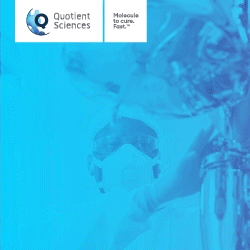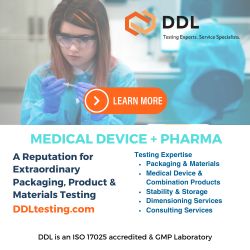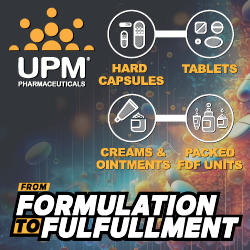Akari Therapeutics’ Nomacopan Demonstrates Positive Early Safety & Efficacy
Akari Therapeutics, Plc, a biopharmaceutical company focused on innovative therapeutics to treat orphan autoimmune and inflammatory diseases where the complement and/or leukotriene systems are implicated, today announced positive results for Part A of TRACKER, a Phase I/II clinical trial evaluating the safety and efficacy of topical nomacopan in moderate to severe atopic keratoconjunctivitis (AKC).
AKC is a serious corneal and eye surface disease which frequently progresses to visual impairment. Currently, there are no approved drugs and current standard of care is based on topical and systemic immunosuppression. The current treatments are considered sub-optimal because they frequently fail to prevent progression of the disease and the topical drops are often associated with a high incidence of pain and irritation.
“The results from the first three patients included in Part A exceeded our expectations. The rapid response and the overall reduction of 55% in the composite clinical score by Day 56 despite the patients starting treatment while on long term maximal cyclosporin, is very encouraging in AKC which has no approved therapy and limited effective treatment options,” said Clive Richardson, Interim Chief Executive Officer of Akari Therapeutics. “AKC is often associated with severe dry eye disease (DED) and as such may be a potential gateway into the broader and significant multi-billion dry eye disease market.”
This early data in AKC further supports the therapeutic efficacy of nomacopan, a dual acting complement C5 and LTB4 inhibitor, observed in initial clinical data for the treatment of bullous pemphigoid and thrombotic microangiopathy after haematopoietic stem cell transplantation which, like AKC, have no approved treatments.
In Part A of the Phase I/II study, three patients were treated with twice daily nomacopan eye drops in addition to standard of care for up to 56 days in order to establish the safety and tolerability of the drops in preparation for Part B, a randomized, double-masked placebo-controlled comparison in 16 patients. Of the three patients enrolled in the study, two completed 56 days of treatment and one completed 14 days and then withdrew for reasons unrelated to the study treatment. All patients, who were on the moderate/severe end of the AKC spectrum, had been on maximal topical cyclosporin, the standard of care, for at least three months prior to entry and continued on it during the trial. In the event of further disease progression, the next incremental step would normally have been systemic immunosuppression.
The drops were found to be comfortable and well-tolerated throughout the trial for all three patients. There were no serious adverse events (SAE) reported. On that basis, the independent safety committee has now given permission for the trial to proceed to Part B and recruitment has commenced.
The secondary objective of the study was to determine efficacy, assessed by a standard composite scoring system [Akpek E.K. et al. Ophthalmology 2004 (III,3)] consisting of five symptoms which were patient reported, and six signs of ocular damage which were graded by the clinician on a direct slit-lamp examination of the eye. Each sign or symptom was graded 0 to 3, where 0 = normal or absent and 3 is the most severe, such that with 11 measures the overall maximum severity score was 33.
There was an overall improvement in clinical score of 55% composed of an improvement in symptoms of 62% and signs of 52% by Day 56. Symptoms consist of subjective occurrences such as discomfort and itching. Signs are objective manifestations of disease, such as conjunctival redness, growth of new blood vessels into the cornea and microscopic damage to the corneal surface (punctate keratitis).
In addition, post-instillation comfort was reported by patients as excellent with high levels of acceptance of eye drops, which were described as comfortable and refreshing.
Mr Sajjad Ahmad, consultant ophthalmic surgeon at Moorfields Eye Hospital and the Principal Investigator in this study said: “Part A of the trial shows that nomacopan is well tolerated and preliminary efficacy data is encouraging. We are hopeful that nomacopan will fill an unmet clinical need in ocular surface inflammation.”
Akari is a biopharmaceutical company focused on developing inhibitors of acute and chronic inflammation, specifically for the treatment of rare and orphan diseases, in particular those where the complement (C5) or leukotriene (LTB4) systems, or both complement and leukotrienes together, play a primary role in disease progression. Akari’s lead drug candidate, nomacopan (formerly known as Coversin), is a C5 complement inhibitor that also independently and specifically inhibits leukotriene B4 (LTB4) activity. Nomacopan is currently being clinically evaluated in four indications: bullous pemphigoid (BP), atopic keratoconjunctivitis (AKC), thrombotic microangiopathy (TMA), and paroxysmal nocturnal hemoglobinuria (PNH). Akari believes that the dual action of nomacopan on both C5 and LTB4 may be beneficial in AKC and BP. Akari is also developing other tick derived proteins, including longer acting versions.
Total Page Views: 1758












